According to Feeding America, the food insecurity rate for Lancaster County was 9% in 2019. This year, it’s estimated that the rate will increase to 10.2% as we continue to recover from the pandemic. Equipping people with the knowledge, experiences and space for gardening can work wonders to reduce food insecurity. Community gardens help to provide green space for city residents to grow their own food, reduce food insecurity and strengthen community bonds by bringing people of all ages, backgrounds, socioeconomic classes and skill levels together. According to the CDC, community gardens also beautify vacant lots, reduce carbon emissions and fuel consumption related to the transportation of food and reduce pollutants by absorbing carbon dioxide. Municipalities across the county see the benefits of community gardens and are opening their own.
Lancaster County Central Park Garden Plots
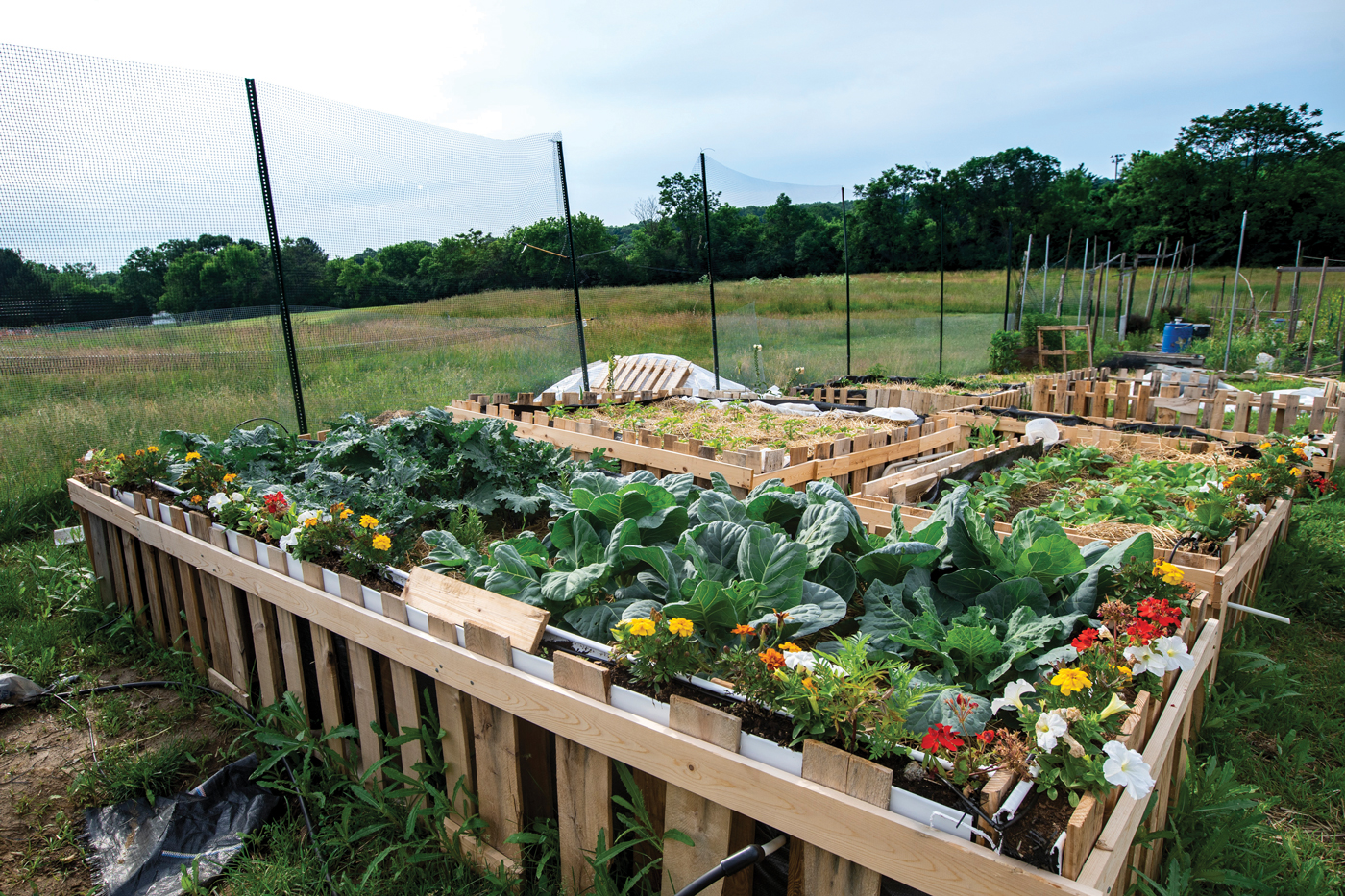
Gardeners at Lancaster County Central Park grow a diverse variety of fruits, vegetables and flowers.
Lancaster County Central Park, located on the southern edge of Lancaster City, receives the most visitors of any county park due to its convenient location and plentiful facilities and recreational features, including a community garden with 200 plots. Available from April through October, the garden plots are open to anyone in the county; however, due to its location, the park mostly sees gardeners from the city, says Parks and Recreation Administrator Paul Weiss. Three plot options are available for a seasonal fee, including 20-by-20-foot plots for $25, 40-by-20-foot plots for $31 and year-round organic 40-by-20-foot plots for $47.
A Rural Respite
The garden plots, located within an expansive field in the middle of the park, have always been an integral piece of Central Park’s history. Paul couldn’t find any documents about the history of the plots, but he knows they have been there at least since the mid-80s. “It may go back even before that,” he says. The land, which Paul believes used to belong to a neighboring farm, became park property around the late 1960s. The garden plot land is just one piece of the interesting mosaic that comprises the 540-acre park, which includes a former landfill, the Kiwanis Area, Historic Rock Ford, a Native American burial site and other pieces of farmland.
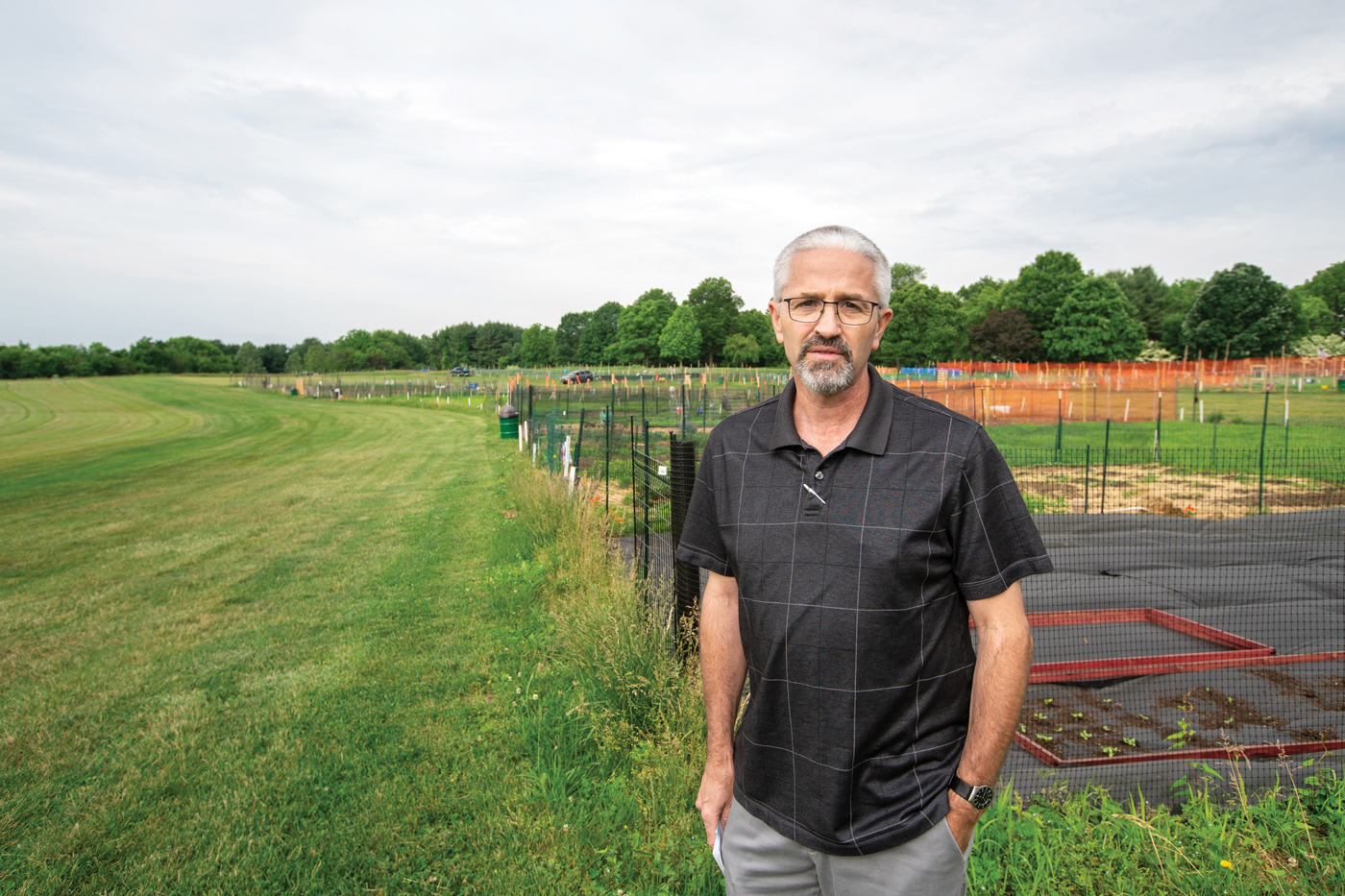
Paul Weiss, the county’s parks and recreation administrator, oversees all nine parks, as well as the garden-plot program at Lancaster County Central Park.
Paul has been with the parks department for 21 years and oversees all nine county parks in Lancaster County. He stresses that renting a plot at the park is a big undertaking and responsibility. “It’s not something you can just stop by every other week. It requires upkeep almost daily or every other day. It’s definitely a challenge and a time commitment,” he says of the dedication gardeners show to their plots. Each year, the goal is to fill the garden plots as much as possible. Paul emphasizes that when there is “checkerboarding” plots, weeds start overruling the space and spreading into neighboring plots.
Filling the plots has not been a problem the last two growing seasons, as the park saw an increase in interest due to the pandemic. When Covid first caused shutdowns, the majority of Central Park’s facilities and programs closed; however, the garden plots remained open. In fact, gardening was encouraged by PA Agriculture Secretary Russell Redding to help curb food insecurity in the face of food supply chain challenges. No doubt, people were also itching to get out of their homes and into nature. “The park has a way of making you feel like you are far away from the city, but really [the city is] just behind those trees,” Paul says as he gestures toward the northwest.
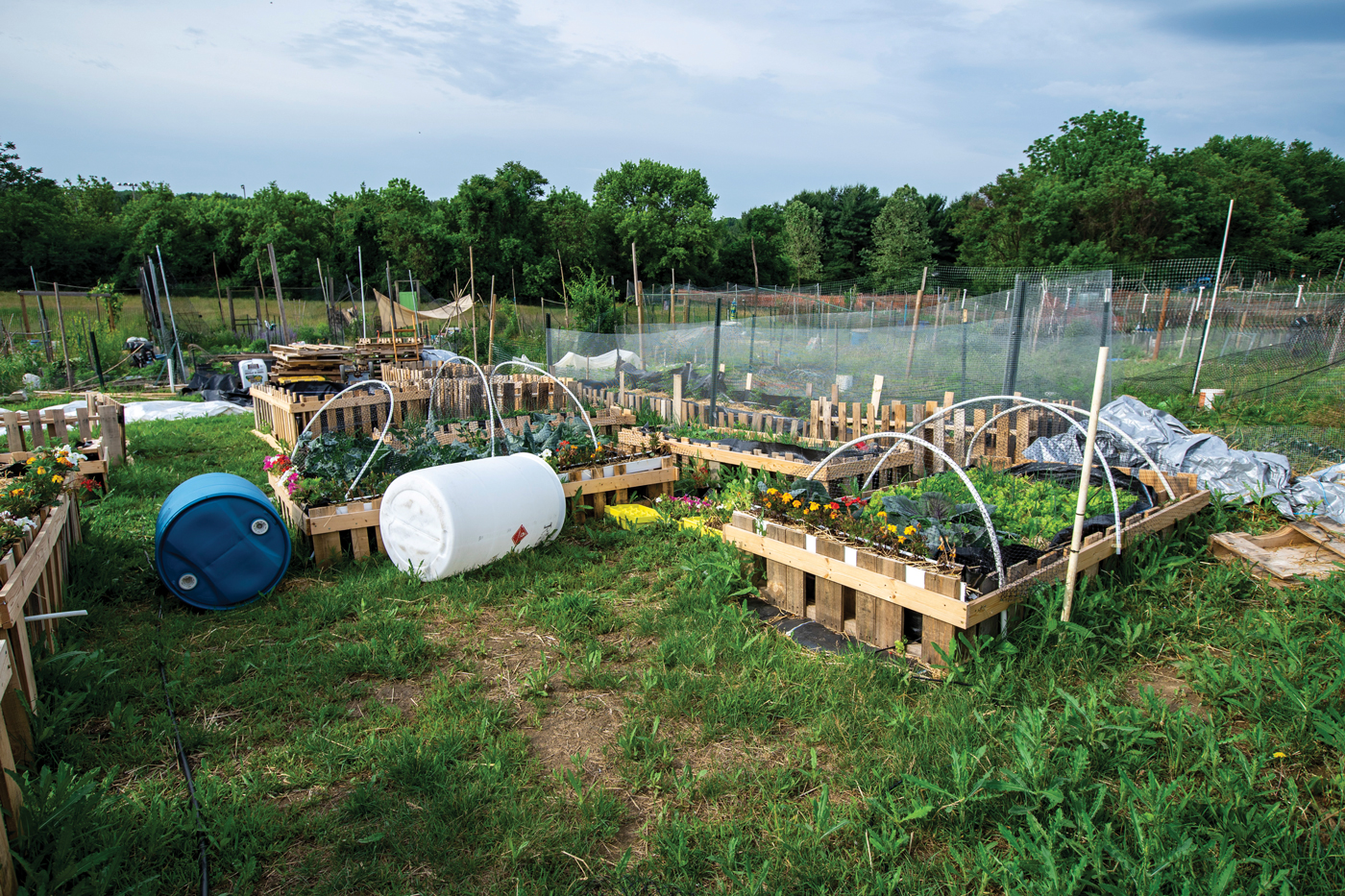
Due to abundant wildlife in the park, gardeners are responsible for installing their own fences to protect their plots.
Plot Practices
Gardeners at Central Park grow a diverse mix of fruits, vegetables and flowers. To avoid lugging their equipment and tools around, gardeners are permitted to drive through the grass, directly to their plots. A water spigot is available for gardeners off of Farm View Drive. No hoses are allowed, so gardeners often bring big barrels to fill and then let gravity feed the water into their gardens.
Wildlife abounds in the park, which is great for leisurely walkers on the park’s many trails, but less ideal for gardeners. Deer, rabbits and voles are regular visitors at the garden, so gardeners are responsible for installing their own fences, which must be transparent so rangers can easily see inside. In addition to fences, gardeners are permitted to customize their spaces with simple trellis structures or garden furniture, including small tables, lawn chairs and collapsible umbrellas. One gardener keeps a sandbox in her plot for her grandchildren to play in while she gardens.
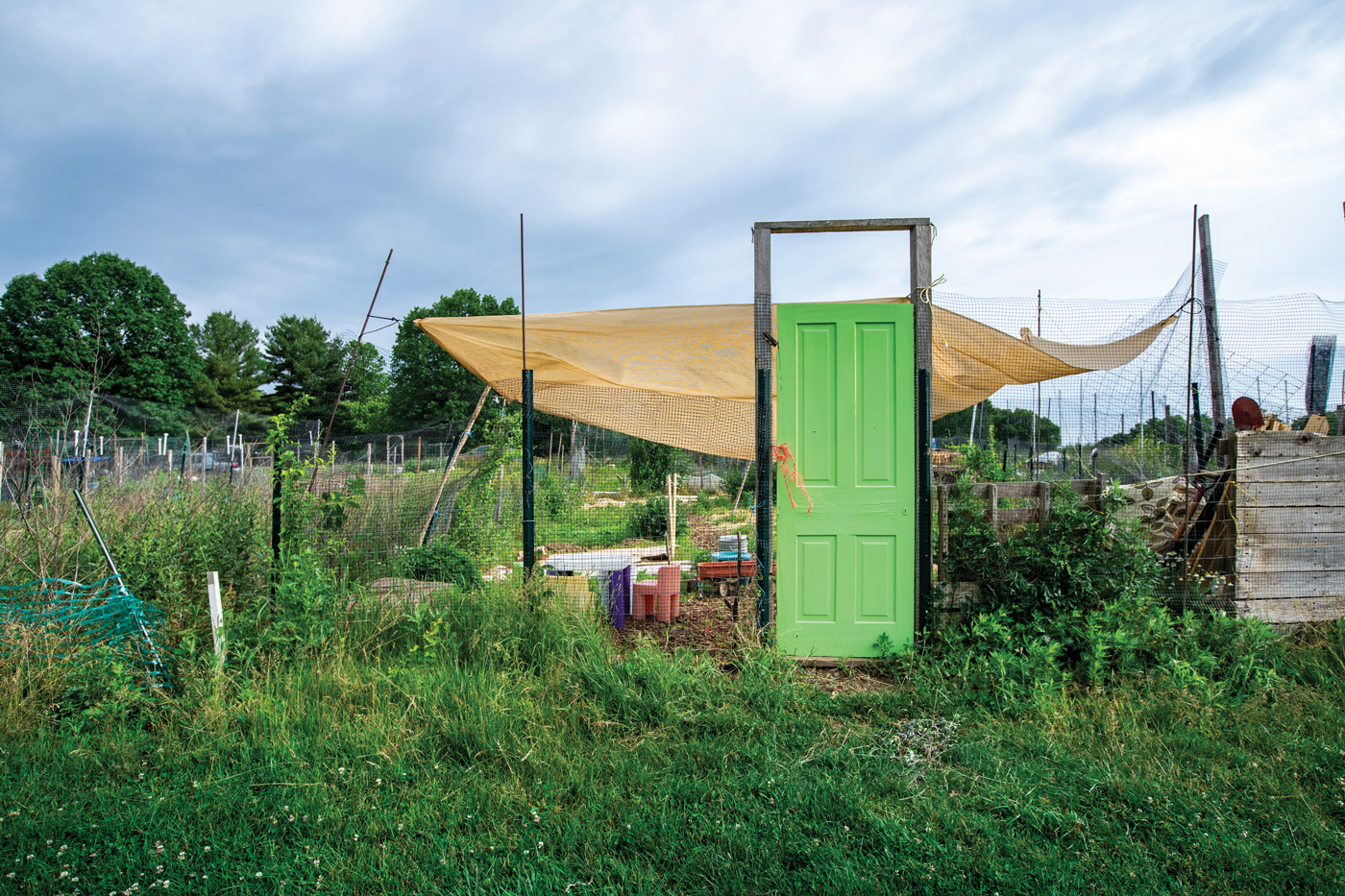
Many of the gardens are distinguished by creative and colorful entryways. The woman who maintains this plot added a colorful front door and furnished it with a playset and sandbox for her grandchildren who often accompany her to the park.
Many gardeners at Central Park donate some of their produce to food banks. Paul sometimes even gets fresh vegetables delivered to his office by gardeners with excess produce. Some organizations dedicated to food justice, including Discerning Eye Community Agriculture (DECA) City Farms, tend to plots at Central Park. The organization, led by Hawa Lassanah, offers CSA deliveries and is dedicated to equipping Lancaster residents with the knowledge and experience to grow their own food. In the past, the parks department held naturalist programs at the garden, including canning presentations and visits from Master Gardeners, but they don’t have any planned this year.
At the end of the growing season, gardeners must remove all nonorganic material (fences, containers and other structures) so that the maintenance team can come through and plow the fields. As long as gardeners take good care of their plots and follow the rules, they are given right to first refusal for their plots the following year.
This fall, the parks and recreation department will be teaming up with the Chesapeake Bay Alliance (CBA) to create a pollinator garden located near the organic plots. The meadow will not only attract pollinators, but it will also help to reduce runoff pollution into the Susquehanna River, which empties into the Chesapeake Bay.
As for the other eight county parks creating their own community gardens, Paul doesn’t see it happening. “They just don’t have the right land for gardening,” he explains. “Central Park is just right.”
Lancaster County Central Park’s garden plots are located at 580 East Farm View Drive, Lancaster. For more information, visit co.lancaster.pa.us/345/garden-plot-rentals.
Wheatland Community Garden
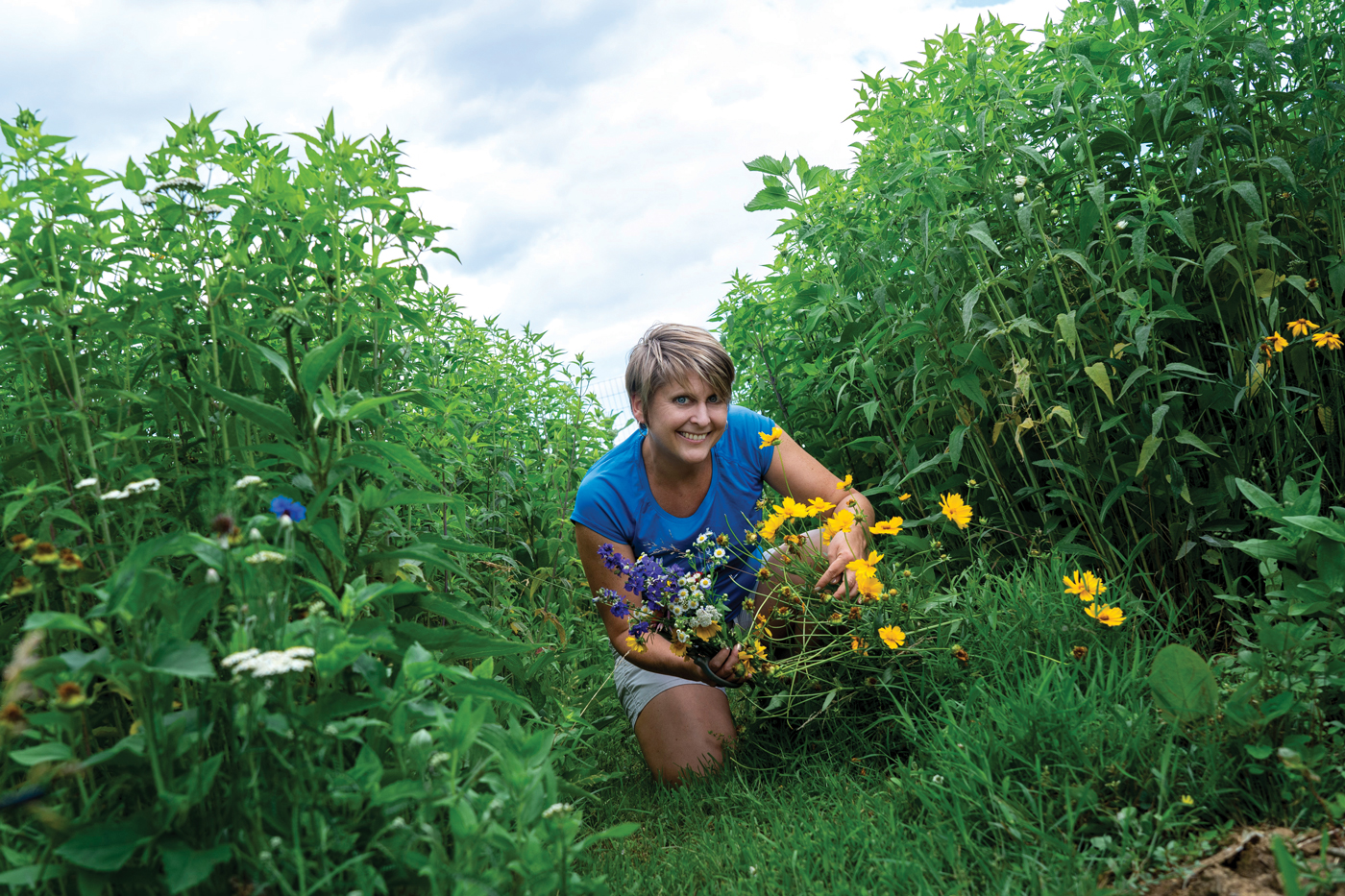
While her family enjoys vegetable gardening, Rebecca Geiser loves to grow flowers and make bouquets.
Located on the edge of the West End, Wheatland Community Garden (WCG) offers Lancaster City residents with another option for growing their own food. The garden is situated on land owned by the School District of Lancaster (SDoL) and sits across from Wheatland Middle School and adjacent to the new Smith-Wade-El Elementary School. The garden offers over 50 10-by-20-foot plots for $20 a season.
The community garden was established in 2012 when local entrepreneur, Charlie Crystle, who was a member of the SDoL school board at that time, negotiated a lease agreement with the district for a community garden. After Crystle was no longer involved with the school board or garden, Katherine Hopkins and several others renegotiated the same agreement and continued the community garden. They kept some of the same provisions that were instituted by Crystle, including donating 10% of produce to a food bank and providing free plots for educational purposes.
A Family Affair
For the Geiser family, gardening is a family affair. The Geisers live in the city just a couple blocks away from WCG and have rented plots for the past six years. This year, Rebecca and Philip rented four plots to share among the family. Their children, Stewart and Hannah, who are both in their teens, started out by each taking care of their own plant and gradually kept expanding until they each needed their own plots.
Rebecca works for the city as deputy director in the Department of Community Planning and Economic Development. Philip is a high school math teacher at Lancaster Catholic and also coaches soccer at McCaskey High School, where Stewart plays on the freshman team as goalkeeper. Typically, they are at their plots once or twice a week to weed and check in on their plants. “This is our happy place,” Rebecca smiles.
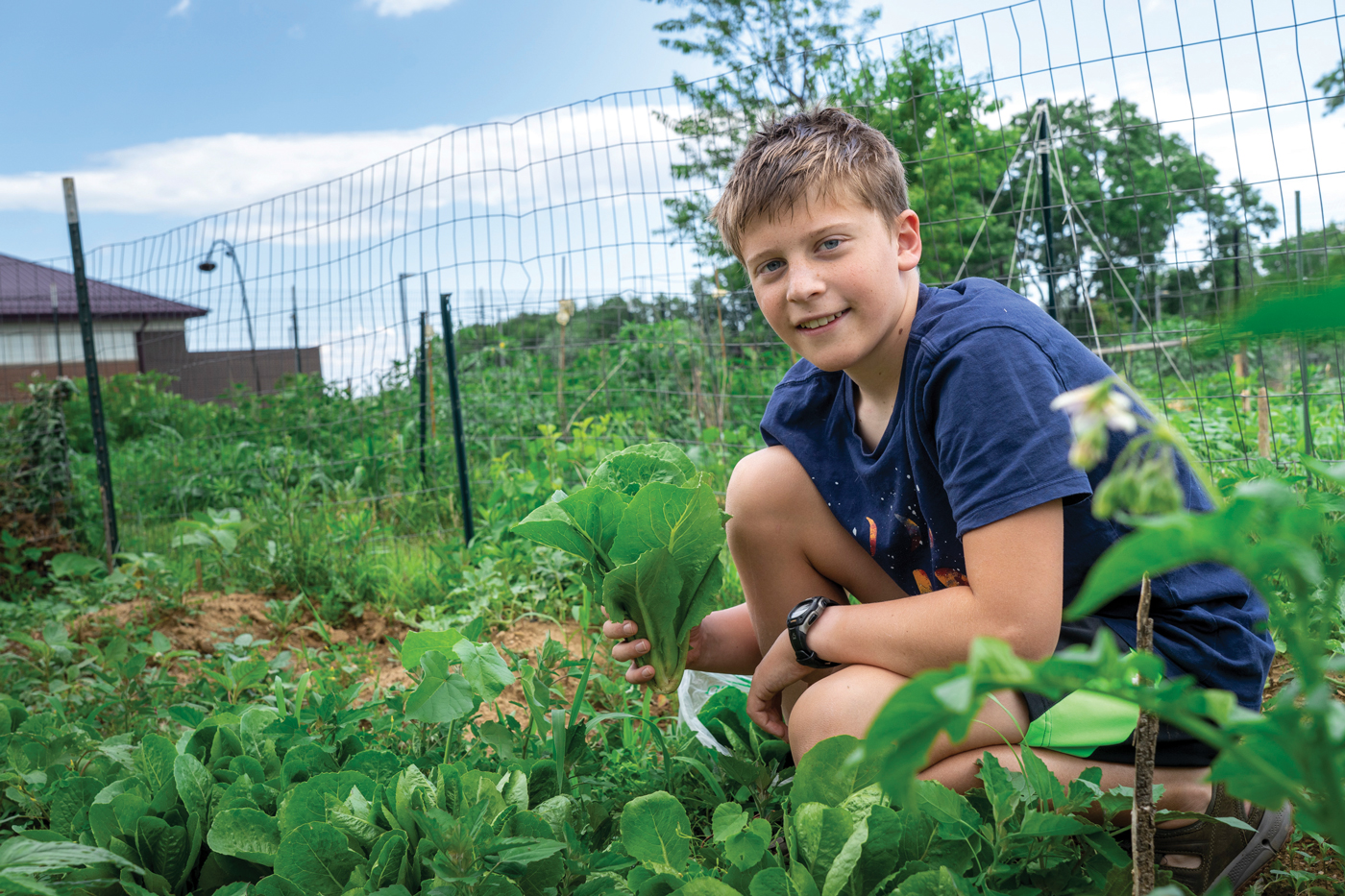
Stewart Geiser harvests some lettuce. Rebecca has noticed that since they began growing their own food, Hannah and Stewart find eating vegetables more enjoyable.
Philip is the gardening authority in the family, whereas Rebecca enjoys working with flowers. Her plot is a tall meadow of blooming flowers, including coneflowers, Eastern daisies and coreopsis. She loves to cut and make bouquets for people.
Hannah, who will be a sophomore at McCaskey, gave us a tour of their plots and the extensive variety of produce they grow, including peas, tomatoes, carrots, zucchini, onions, watermelon, cauliflower, purple bush beans, potatoes, cucumbers, lettuce, spinach and several rows of corn.
Stewart, who will be in eighth grade at Wheatland Middle School, says his favorite food to eat from the garden is cucumbers. “It’s satisfying when the plants start producing and you get to see your work pay off,” Stewart emphasizes. “I also like that they go through phases,” he says of the changing growing seasons.
Changing Tastes
One of the best parts of gardening is getting to taste what you’ve worked so hard to grow. Philip is usually the one who crafts their family’s fresh-grown produce into meals. Rebecca loves to make sauce with their fresh-grown tomatoes if they grow enough.
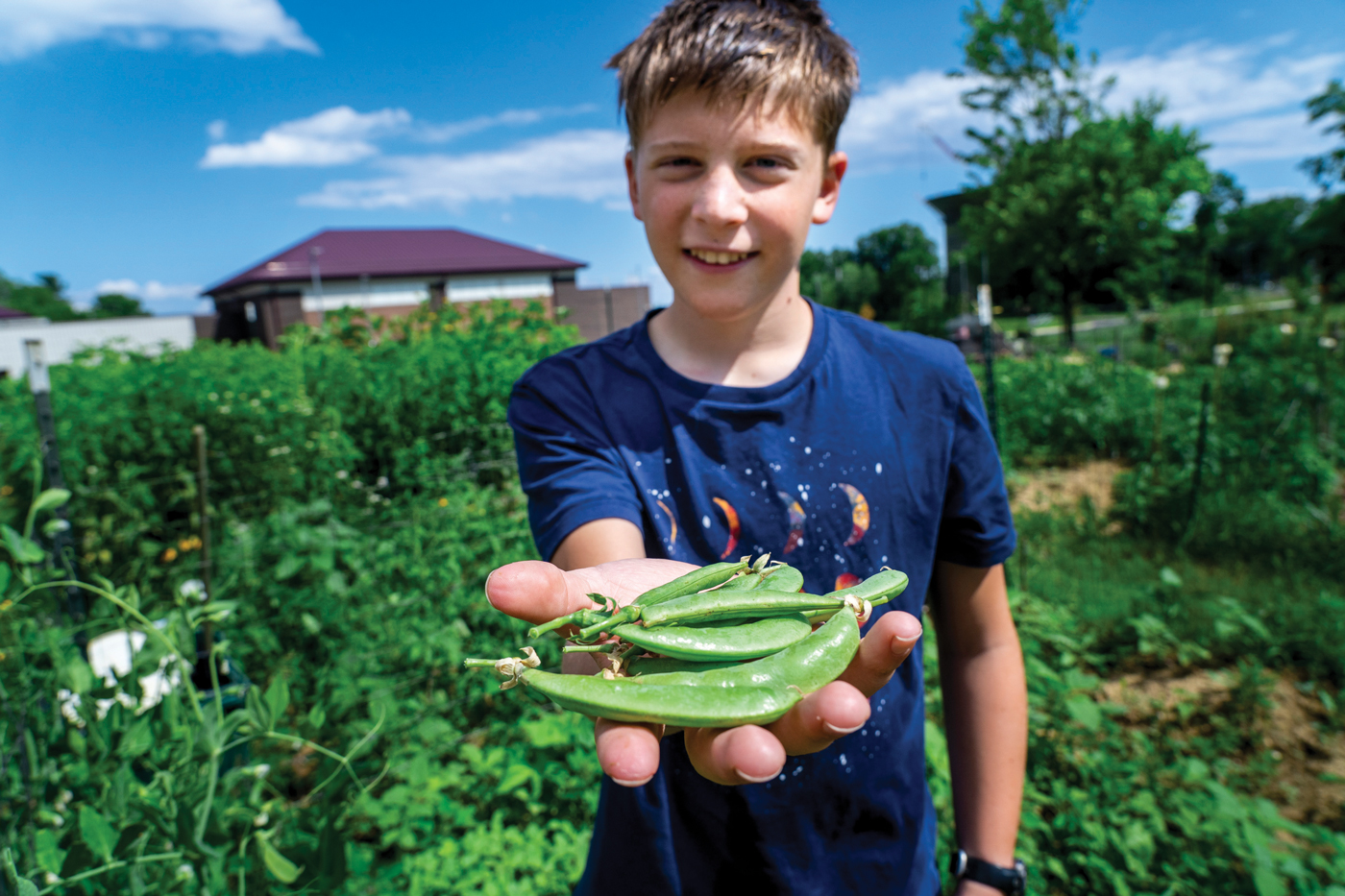
Stewart’s favorite part of gardening is seeing his hard work pay off when the plants start producing.
Salads are big in the family. Rebecca attributes growing their own lettuce and greens to why the kids started to enjoy salads. Rebecca has noticed the same sentiment with other foods they grow, as well. “For example, Hannah has started to really enjoy radishes after she began growing them,” Rebecca says. “It’s been really fun to watch,” she says of their changing and expanding tastes.
Common Good
Although most of the garden’s operations are overseen by Katherine Hopkins, all volunteers and plotholders work to maintain the garden. Each season, every gardener must complete at least two hours of community service within the garden, whether it’s mowing in between aisles or weeding common areas to keep the garden tidy. Water and tools are available and shared among gardeners.
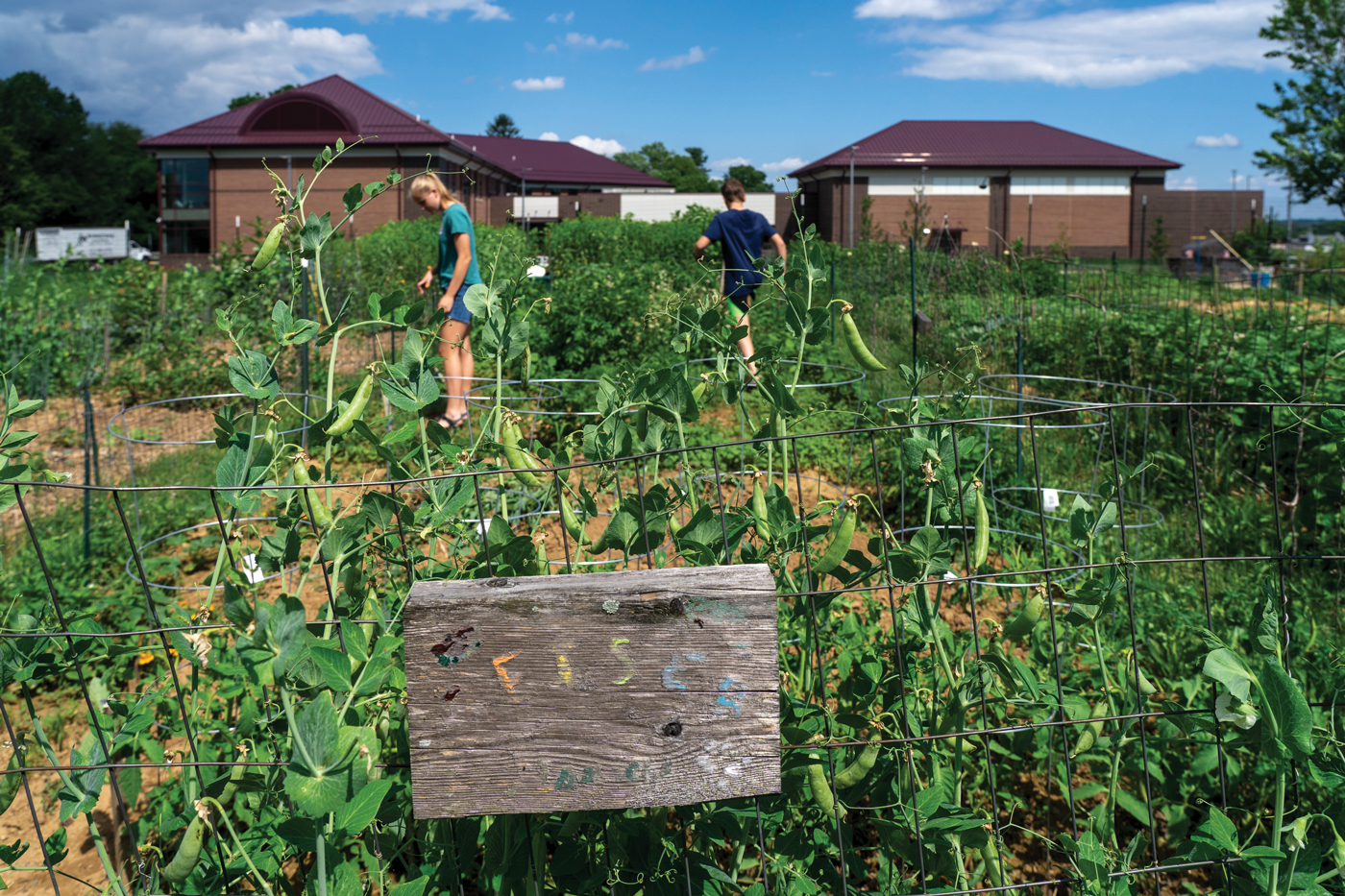
Hannah and Stewart started gardening by each taking care of a plant and gradually expanded until they each needed their own plot.
One of the cornerstones of the garden is giving back to the Lancaster community. All plotholders donate 10% of their produce to Lancaster Food Hub. Each week, a cooler is set by the front gate for gardeners to drop off their donations. Before taking it to the food bank, the cooler is weighed each week so they can get an idea of how much they donated at the end of the season.
On the west side of the garden, another fenced-in area is currently blooming with sunflowers. Stewart had a hand in the project, which was executed by Wheatland Middle School’s National Junior Honor Society. The organization spent hours in the garden planting seeds to help beautify the community.
The Gardening Craze
Prior to Covid, there would usually be several empty plots where volunteers would have to plant cover crops and manage weeds. Over the past year, the garden has seen an uptick in participation. In both 2020 and 2021, the garden has been fully rented and even had to implement a wait list. “The gardens looked so great last summer because everyone was here so often,” Rebecca laughs, noting, “There wasn’t a weed in sight.”
Rebecca explains that they see gardeners of all skill levels and she was happy to see that a lot of the new gardeners from last year came back again in 2021. “Everyone is really friendly,” Rebecca emphasizes. “Especially last year – we had a really great community develop.”
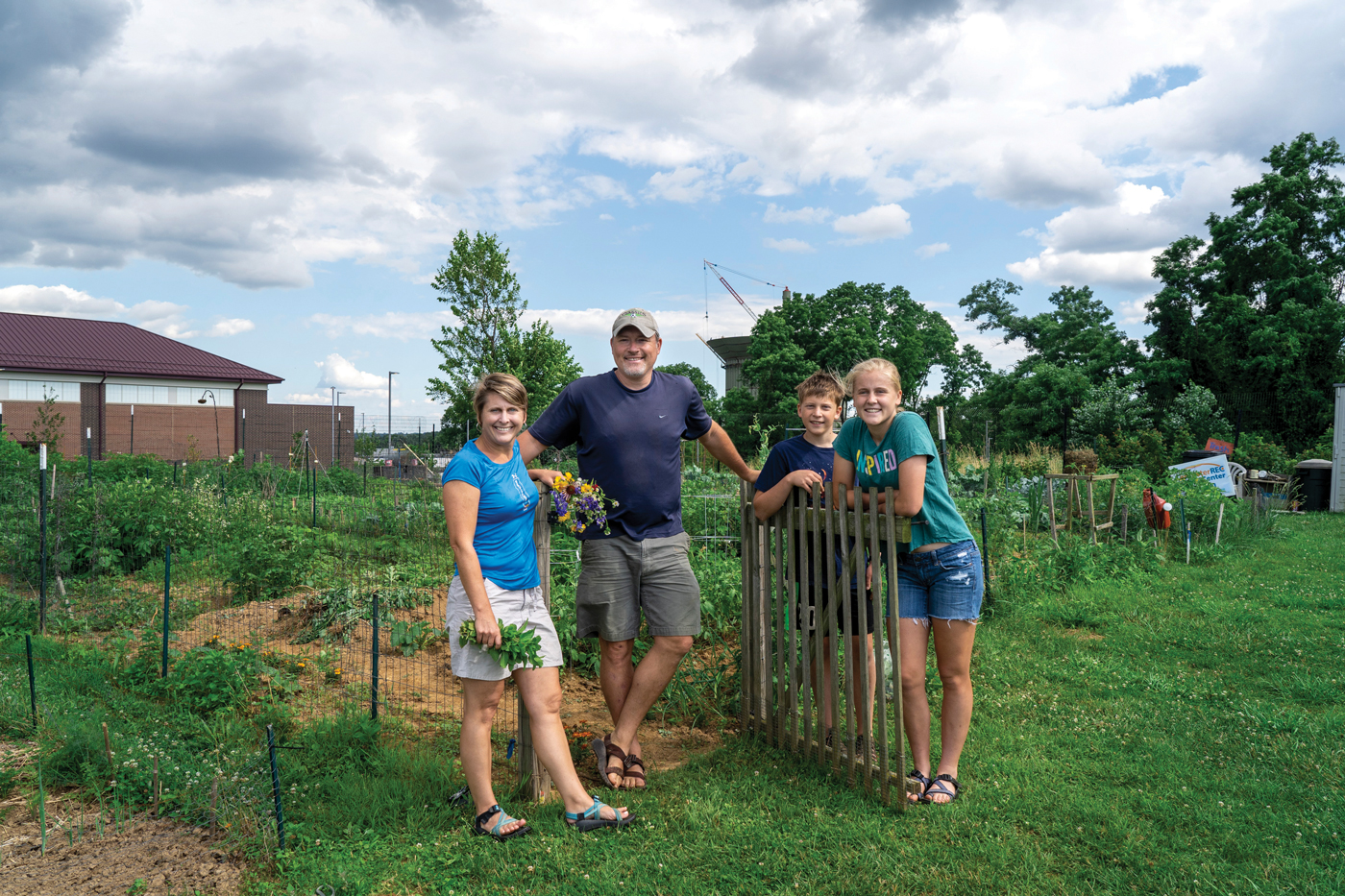
The Geiser family has rented garden plots at Wheatland Community Garden for six years. It’s their “happy place.”
Wheatland Community Garden is located at 950 Hamilton Park Drive, Lancaster. For more information, visit wheatlandgarden.org.
Kids & Gardening
Stewart and Hannah represent a growing number of young people showing interest in gardening. The National Gardening Association found that a record number tried their hands at gardening during the pandemic. Involving children in the garden helps to encourage healthier diets, reduce screen time, burn off extra energy, develop fine motor skills and learn responsibility and delayed gratification. Local school districts are taking notice of these benefits; gardening and outdoor programs are popping up at schools across the county.
At the School District of Lancaster’s Wharton Elementary, students can get their hands dirty and learn about gardening through a burgeoning outdoor classroom. Teachers use the area for classroom instruction, as well as summer and afterschool programs where students can get hands-on experience in the garden. Students work together to prepare the soil, plant, water, harvest and eat what they grow. They also learn about the different varieties of plants they grow, many of which are different from those typically found in a grocery store. “Students are encouraged to eat right from the garden since we don’t use any chemicals, pesticides or herbicides,” says Carmalena Stoltzfus, who heads the Parent Garden Committee. “We often hear things like, ‘I didn’t know kale is good!’ and ‘I never liked tomatoes before!’”
While school was held virtually during the pandemic, participation in the garden pivoted to an Adopt-A-Week program. Carmalena and other garden volunteers coordinated with the school’s Student and Family Resource Coordinator to give excess produce to families that were experiencing hardship. During summer break, the Adopt-A-Week initiative is continued to keep the garden thriving. Families choose a week to care for the garden, and they get to enjoy fresh produce during their volunteer time.
“I think that connecting kids (and their caregivers when we can) to the whole process of what it takes to grow food can inspire them to make healthier choices in the future,” Carmalena says. “I also think that there is so much satisfaction that can be had when working with our own hands to grow what we then can eat.”
The school is looking to expand the garden program in the future. Members of the PTO and Wharton staff developed a plan to take more learning outdoors and provide teachers with resources to teach outside in a non-traditional environment. The expansion project, currently called the Wharton Wonder Garden, plans to increase their tree canopy, establish a native plant and pollinator garden, add a second edible garden, build an outdoor classroom and create a mindfulness circuit.





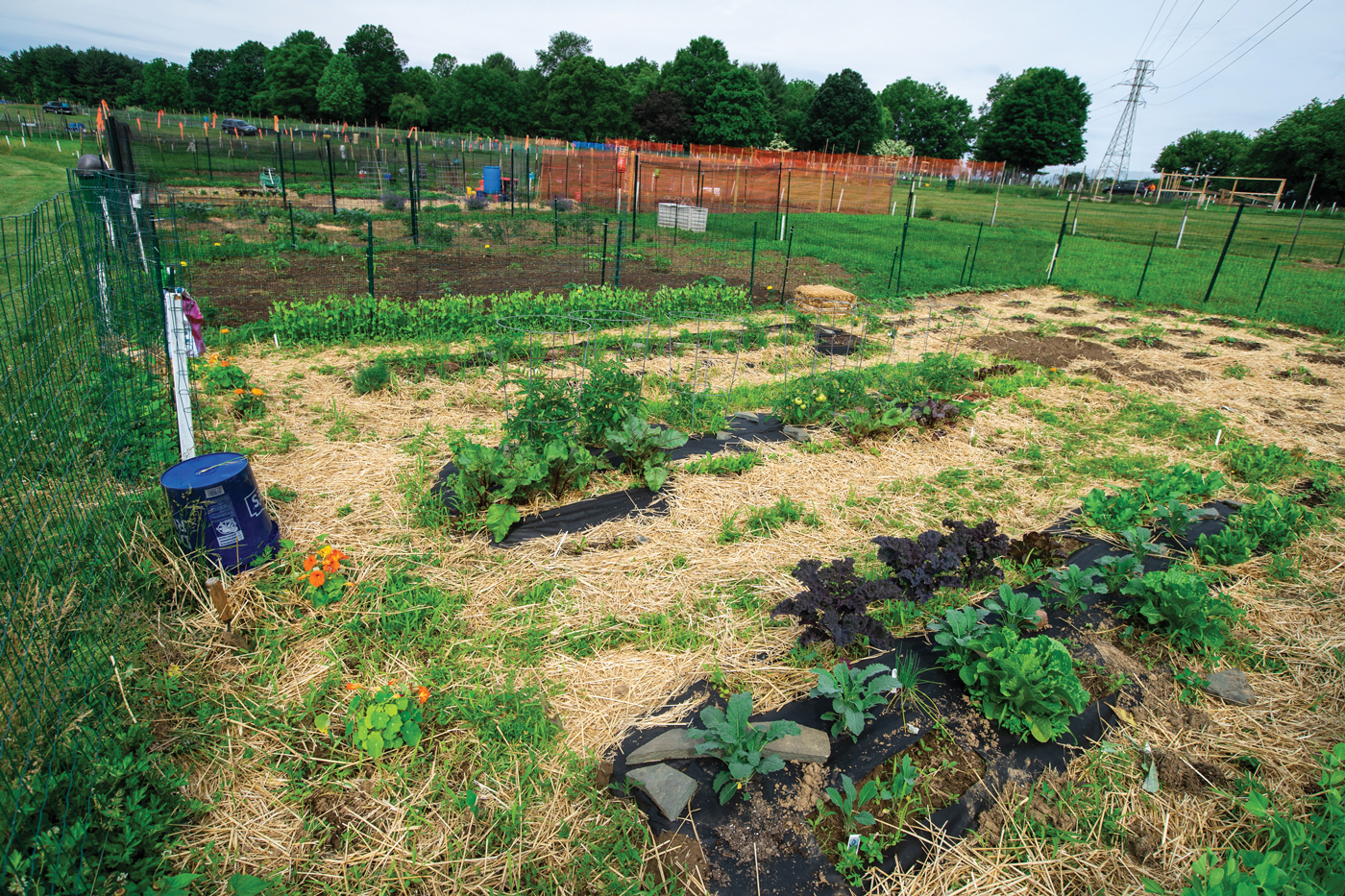
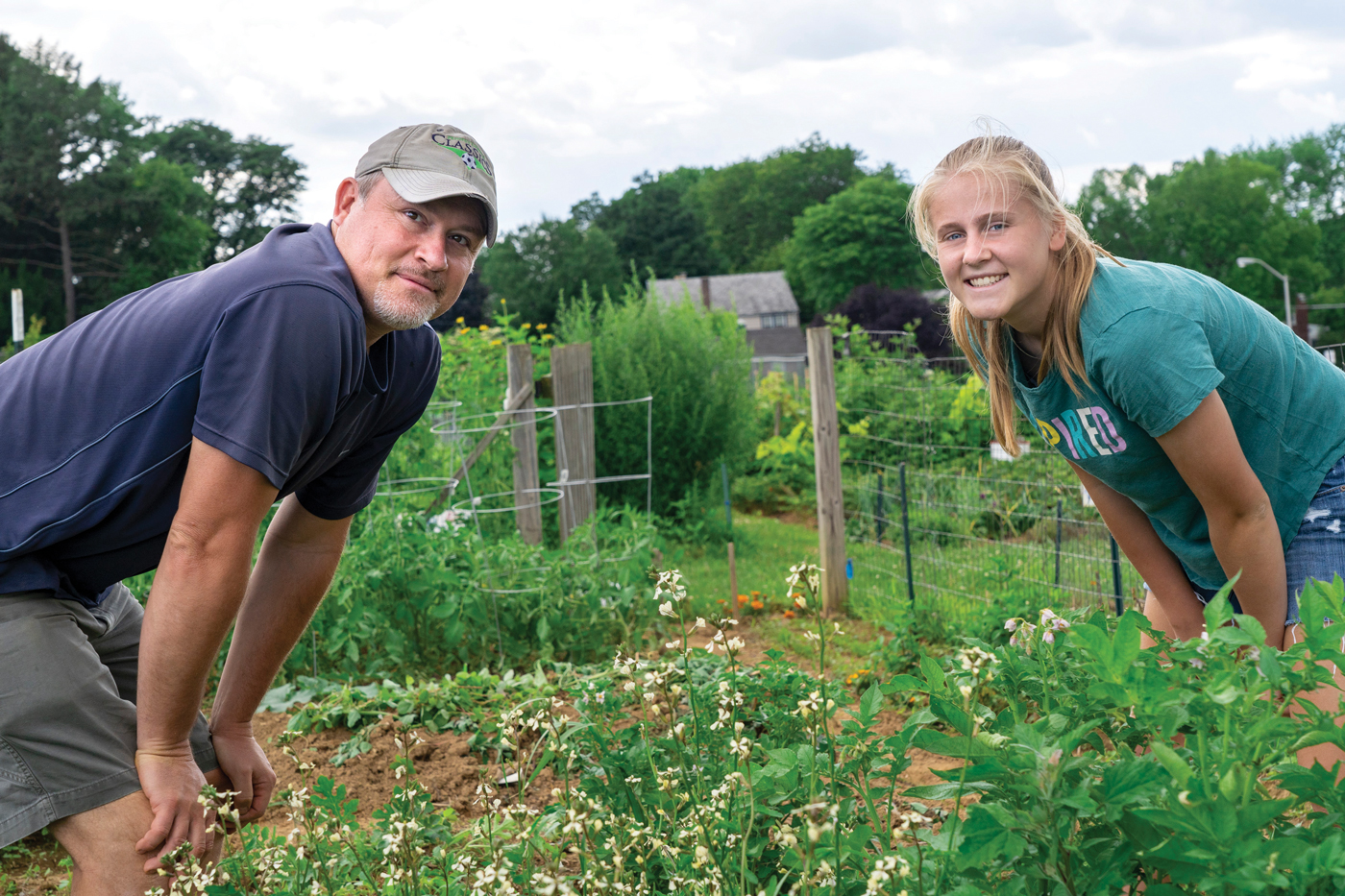
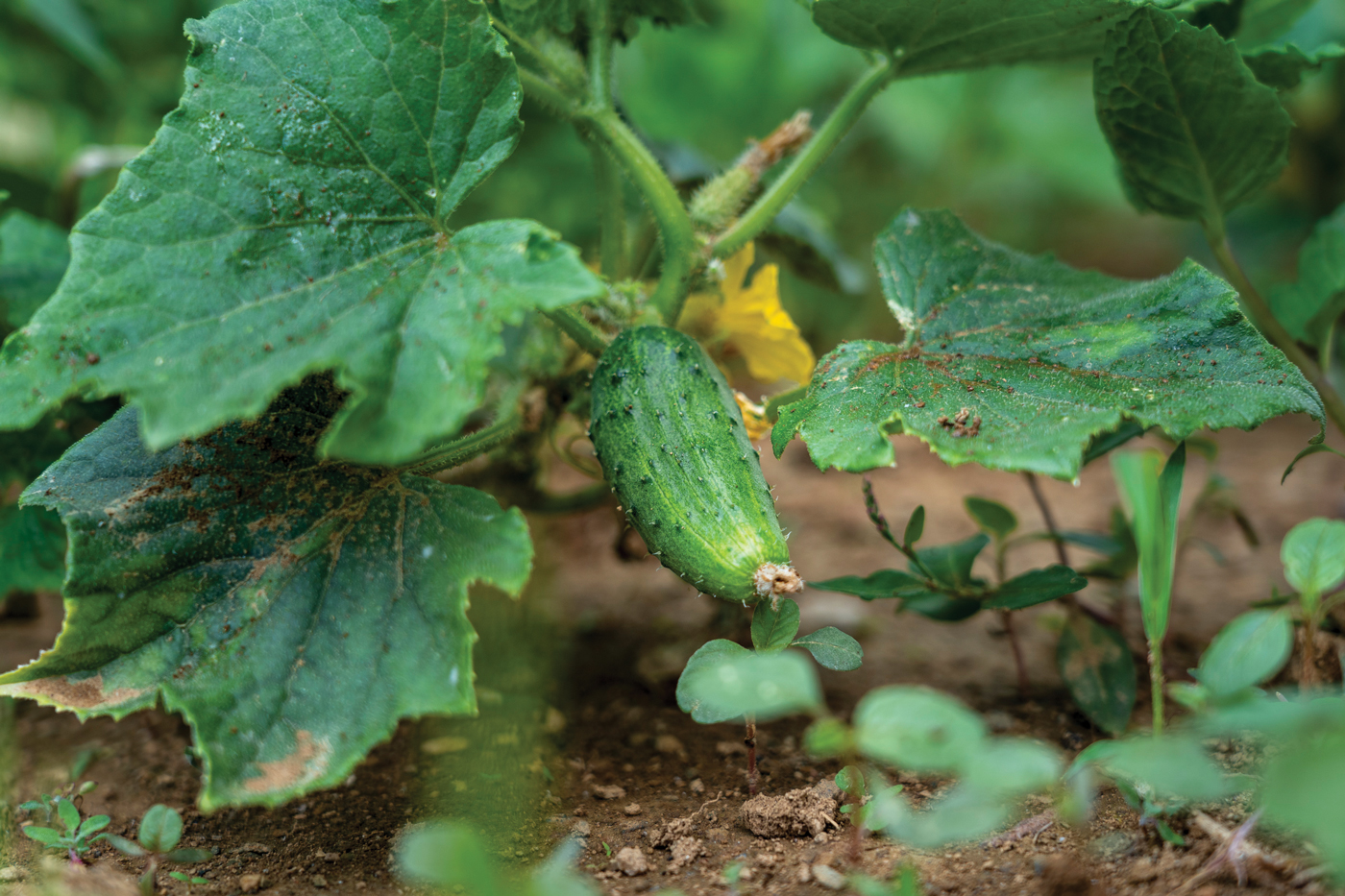
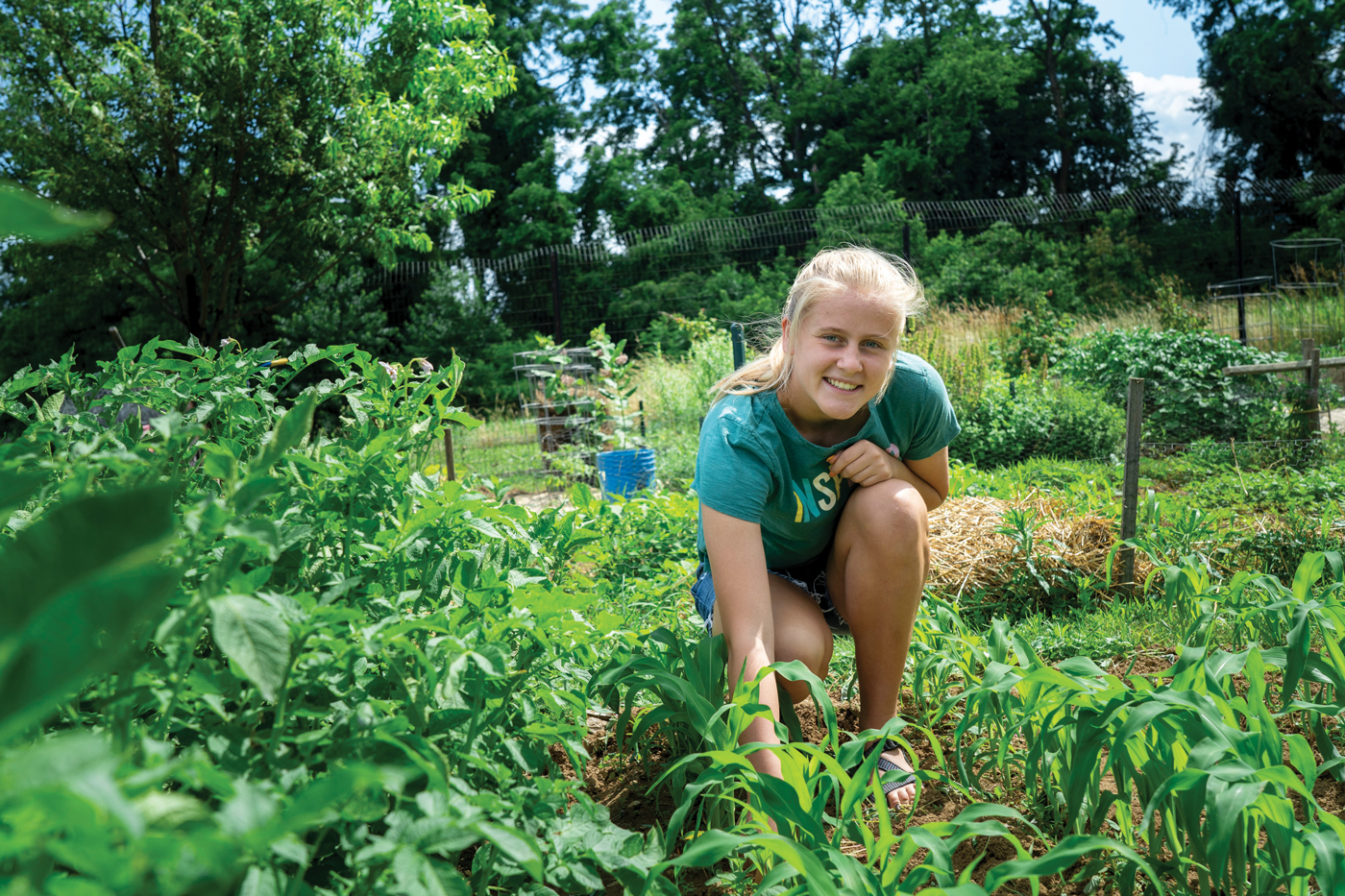
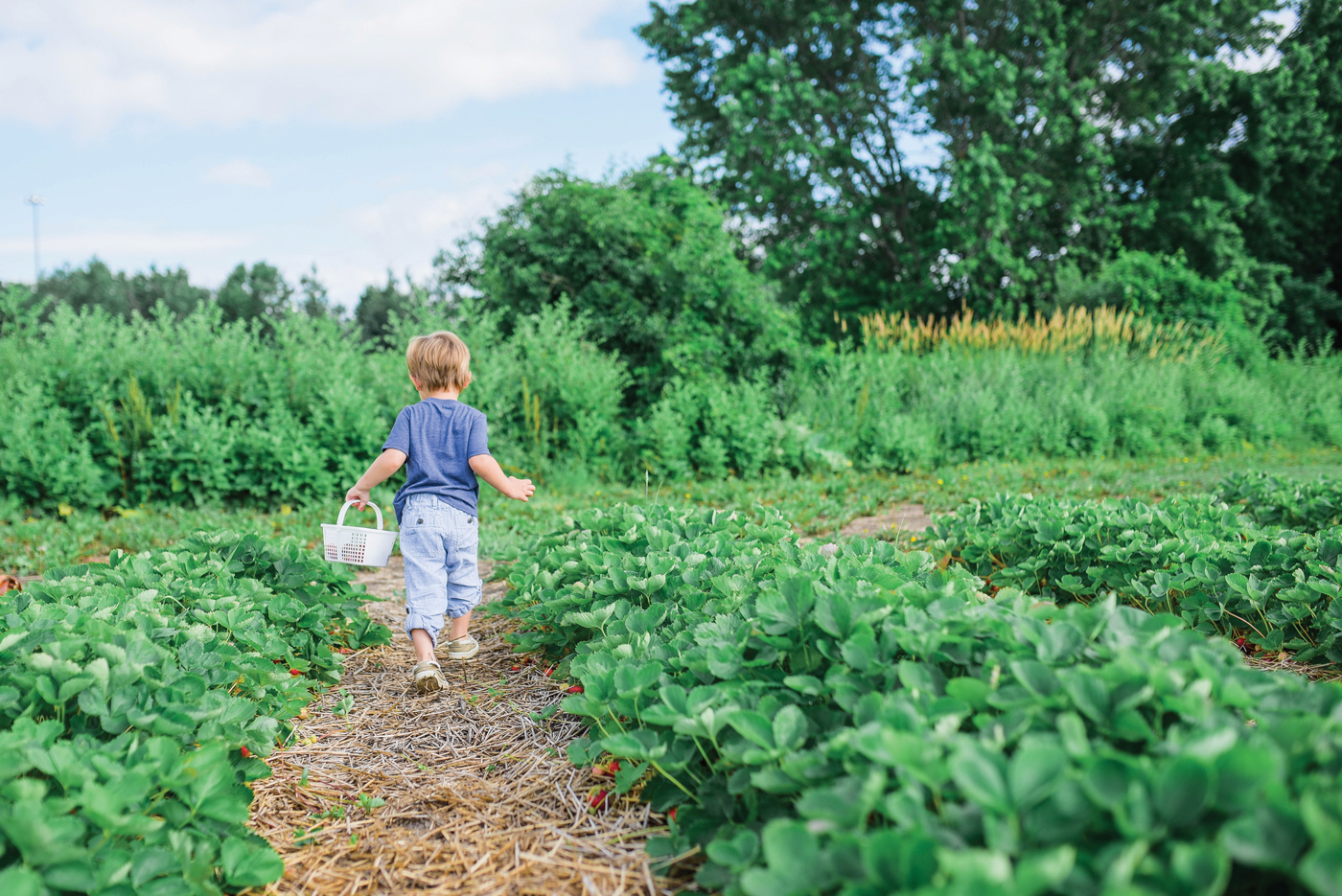
Ephrata also had a community garden. A portion of the garden is sheerly for fresh, organic produce that is sent to Ephrata Area Social Services. You can find more information on the Ephrata Community Garden’s Facebook page.